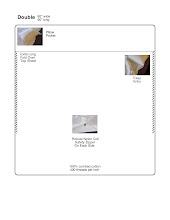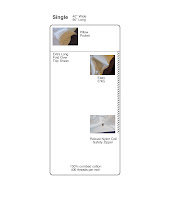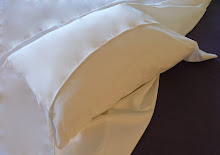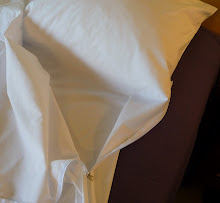A travel sheet, for those of you who have not heard of such an item, is a light weight piece of fabric sewn together in a sleeping bag configuration. Travel sheets are used to protect against unclean bedding, usually in hostels, but also are called sleeping bag liners, as they protect the sleeping bag from bodily fluids like sweat. The materials used to make travel sheets or sleeping bag liners range from cheap thin cottons, poly cottons, polyester fleeces, to silk and higher qualities of cotton. Silk is used primarily to make them light weight for backpackers to carry and wash easily in a sink and air dry quickly. Sheets and liners are usually closed with a velcro tab, button or snap, or tie up. Prices range from 20 dollars up to 200 dollars, depending on size and fabrication. For our discussion today we will focus on the higher end travel sheets meant for protection from everything from harsh detergent sensitivity, lice, bedbugs, allergens like animal and dust mite dander, and just plain unclean bedding in hotels. Some terms you will need to familiarize yourself with are:
Pillow Pocket: an attached sleeve or envelope to place a pillow in so the user will not contact the pillow.
Fold Over Top Sheet: a flap on the top of the travel sheet which folds over the blanket so the user does not contact the blanket.
Pore Size: the size of the space between the threads of the fabric, measured in microns.
Chemical Sensitivity:
Hotels have to contend with a wide range of guests along with each guest's particular human condition. Does the guest sweat at night, is the guest incontinent, are the guests having sex, does the guest drool, must I go on. Just knowing what your own bodily functions are capable of while you lie in bed is enough to fathom, let alone sleep in a bed whose last guest you never knew.
To combat the stains and germs associated with the hotel concept, the industry must use fairly powerful detergents, bleaches and surfactants, to provide us with those freshly scented sheets we, as the traveling public, have come to expect. Some people equate the smell of detergents or the masking scent of flowers or "Spring" with cleanliness. On the other hand, there are people who are very sensitive to these chemicals, and they are chemicals, that produce these scents and the bright white linens. If you are one of these sensitive guests, you would be well served to use a travel sheet, one with a pillow pocket to shield you from the pillow case. For chemical sensitivity, pretty much any quality travel sheet will do, unless of course you are sensitive to polyester or the dye which colors the travel sheet. In that case choose a white, cotton or silk, travel sheet. Organic, un-bleached, un-dyed fabrics are available but they are very expensive.
Critters: ( bedbugs,lice etc. ):
While head lice are not very prevalent in hotels , they can be experienced on planes, buses, trains or anywhere you lay your head. It is a misconception that head lice are found on only dirty people, in actuality, they like clean heads and hair and don't live that long when not on a nice clean warm host. Again, a travel sheet with a pillow pocket is ideal, just slip the pocket over the headrest and sit down or climb in.
Now bedbugs are a completely different story. With the banning of DDT in the sixties, bedbugs have made a comeback in a big way, they are now epidemic in many of our cities and towns. Bedbugs are excellent travelers and they or their eggs can survive cold, even freezing. They are, or are becoming, resistant to many of the chemicals legally used to kill them. Once your home or hotel is infested, they are extremely difficult to eradicate. Bedbugs don't transmit disease but being bitten can cause reactions from local irritation, redness and swelling to a full blown allergic episode, not to mention a bad case of the heebie jeebies. Short of using chemicals or professional pest control services, the only reliable way to kill bedbugs and their eggs is high heat for an extended period of time. Washing affected clothing or bedding in hot water, at least 60 degrees centigrade/130 fahrenheit, then drying on high heat is the best way. Some pest control companies use steam to kill the vermin but this must be done properly to ensure complete success. Just one egg will be all that's needed to re-infest. With that said, a travel sheet will help to protect against bedbugs, especially if is zippered. That way only your head is vulnerable to attack. Theoretically a bedbugs' mouth parts are long enough to penetrate fabric but highly unlikely.
Allergens:
Here's where we get a little technical. For the purposes of this article when we talk about allergens, we mean dust mite by-products and cat /dog dander. Dust mite by-products encompass everything from their dead bodies to their fecal excretions. Dust mites are unavoidable, they feed on the dead skin cells which fall off our bodies constantly, 80% of house dust is dead skin. I don't care how clean you are it is impossible to completely eradicate dust mites from our lives and certainly from a hotel room. The best we can hope for is to keep their numbers down to a minimum. Actions like vacuuming, providing you are using a well filtered vacuum and not just spreading the dust around, encasing mattresses and pillows in mite proof materials, replacing carpets with flooring, and using non toxic topical applications can greatly decrease the allergens present in a room.
Most danders whether from cats or dogs or dust mites are very small, with cat dander being smallest. While dust mite allergens average around 10 microns, cat dander can be as small as 6 microns. In the " allergy industry " any barrier with a pore size of less than 10 microns is considered effective in blocking most danders. That's not to say it's allergy proof, but is the best you can get without using a material like plastic or something that won't breathe well. It is important for a travel sheet to " breathe", be able to pass some air from one side of the fabric to the other. A plastic bag does not breathe, a fabric with a 4 micron size breathes better than a plastic bag but not enough to be comfortable to sleep in, 4 microns makes a great mattress encasement but not a great travel sheet. Silk does an excellent job of filtering out allergens because it is tightly woven and has a small pore size, but if you've ever worn a silk shirt you know how warm silk can get, and silk is delicate and can't be washed in hot water or placed in a hot dryer.
I haven't mention composite or coated fabrics. These are materials with either a coating or another layer of another material bonded to it. These layers or coatings serve to shrink pore size to very small or not at all. Some of these materials claim to be waterproof but breathable. They may be just that and be great for protective sheets for incontinence or childhood bed wetting but not for a comfortable sleep. There is a difference between sleeping on a sheet and sleeping in it. If the material does not breathe well you'll end up sweating all night long.
The last type of travel sheet material is one that has been treated with an insecticide. These are great if you're in the Congo but not so great for Chicago. That would be overkill to say the least.
You Need:
A travel sheet that has these attributes-
Pore size below 10 microns
Pillow pocket and fold over top sheet
Zipper not velcro, snaps or buttons.
Breathability and comfort
Ability to be washed in hot water and dried in hot air
Quality, something that will stand up to repeated washings
Affordability
Totally Gross:
This sums up how I feel about sharing a bed with strangers. It doesn't matter if it's a $400 per night hotel in New York, $90 a night in Roanoke, or $3000 per week cruise ship. I have experienced dubious to filthy in all of them. Cleanliness is not dependent on price or cache, some of the ritziest hotels in New York have had bedbug infestations and I have stayed in a $50 a night motel in South Carolina that was so clean I could have eaten my fried chicken off the bathroom floor. " He's paranoid ", "I've never had a problem " you say. Well that may be true, at least that you've known about. Want to get grossed out, buy a 10 dollar black light and take it with you next time you stay in a hotel, close the lights, shine the black light on the sheets, just be prepared to sleep in your car or not at all. To be honest, I don't worry about bedbugs or getting sick from the bedspread that's only washed a few times a year, after Billy Bob and Bobby Sue consummated their marriage on it, or the pillow that the fat guy with sleep apnea was drooling on. I use a travel sheet just because the thought of not using one is just GROSS !









No comments:
Post a Comment